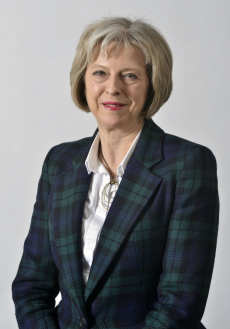
In the United Kingdom, the Prime Minister (PM) is the head of the government. As the Cabinet Manual, a document which for the first time put into writing an official summary of the political structures of the UK state, put together under the orders of Gordon Brown, our Prime Minister from 2007-2010, says: “The Prime Minister is the head of government by virtue of his or her ability to command the confidence of the House of Commons.” That is, they must have enough of the 650 or so Members of Parliament (MPs) which sit in the House of Commons on their side in order to legitimately take charge of the government.
Most of the time, this means they must be the leader of the largest party in the House of Commons (Commons for short) – the party with the most MPs. Our current Prime Minister is Theresa May. She heads the government because she is the leader of the Conservative party, which currently occupies 329 of the 650 seats in the Commons and has held a slim majority in the house since 2015.
She has never won a general election. Instead, she became Prime Minister after the resignation of the last Prime Minister, David Cameron in 2016. In July he stepped down as PM and thereby also as leader of his party, which triggered a Conservative leadership election. Theresa May won this election because all her other rivals dropped out or were knocked out and so she became leader of the Conservatives and Prime Minister of Great Britain and Northern Ireland.
Much of what the Prime Minister does revolves around their exercising of the Royal Prerogative. The Royal Prerogative is a source of authority in the British constitution, containing powers which could be used by the monarch without consulting the UK Parliament. However, since about the 19th century, practical control over the Royal Prerogative passed to the Prime Minister, though used in the name of the monarch.
With the Royal Prerogative, the Prime Minister is able to appoint the MPs he or she wants to work in various government departments as ministers; the senior ministers making up his or her cabinet, the central decision-making body in government. They appoint the Bishops and Archbishops of Canterbury and York from the Church of England, give out honours, such as knighthoods, and award peerages for people who then go and sit in the House of Lords.
They also have the power to appoint senior judges and, most seriously, the power to declare war. Yet, with the latter it is becoming convention nowadays for Prime Ministers to consult Parliament before making a declaration of war. David Cameron consulted parliament about whether to bomb the army of Bashar al-Assad, the dictatorial leader of Syria, in 2013 and when it rejected his proposal he obeyed. In 2015, he consulted parliament on whether to bomb Islamic State in Syria and the members of the commons gave him their approval to do so. It will be interesting to see if this dynamic continues.
Image: By UK Home Office [CC BY 2.0 (http://creativecommons.org/licenses/by/2.0)], via Wikimedia Commons

0 Comment:
Be the first one to comment on this article.